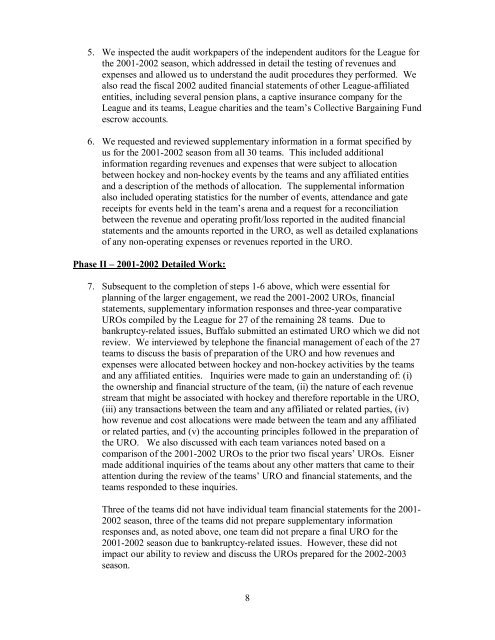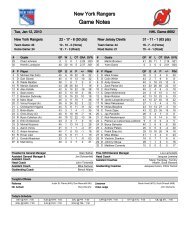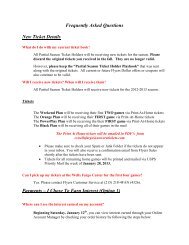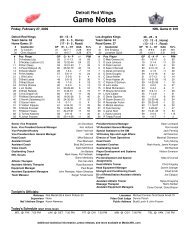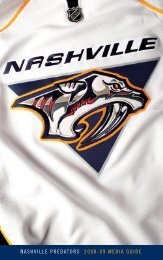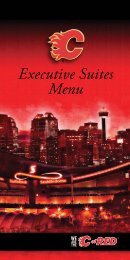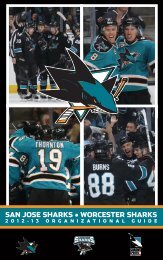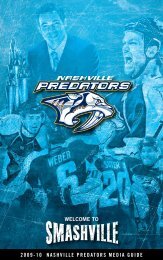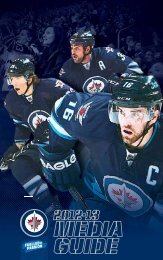Levitt Report - NHL.com
Levitt Report - NHL.com
Levitt Report - NHL.com
You also want an ePaper? Increase the reach of your titles
YUMPU automatically turns print PDFs into web optimized ePapers that Google loves.
5. We inspected the audit workpapers of the independent auditors for the League forthe 2001-2002 season, which addressed in detail the testing of revenues andexpenses and allowed us to understand the audit procedures they performed. Wealso read the fiscal 2002 audited financial statements of other League-affiliatedentities, including several pension plans, a captive insurance <strong>com</strong>pany for theLeague and its teams, League charities and the team’s Collective Bargaining Fundescrow accounts.6. We requested and reviewed supplementary information in a format specified byus for the 2001-2002 season from all 30 teams. This included additionalinformation regarding revenues and expenses that were subject to allocationbetween hockey and non-hockey events by the teams and any affiliated entitiesand a description of the methods of allocation. The supplemental informationalso included operating statistics for the number of events, attendance and gatereceipts for events held in the team’s arena and a request for a reconciliationbetween the revenue and operating profit/loss reported in the audited financialstatements and the amounts reported in the URO, as well as detailed explanationsof any non-operating expenses or revenues reported in the URO.Phase II – 2001-2002 Detailed Work:7. Subsequent to the <strong>com</strong>pletion of steps 1-6 above, which were essential forplanning of the larger engagement, we read the 2001-2002 UROs, financialstatements, supplementary information responses and three-year <strong>com</strong>parativeUROs <strong>com</strong>piled by the League for 27 of the remaining 28 teams. Due tobankruptcy-related issues, Buffalo submitted an estimated URO which we did notreview. We interviewed by telephone the financial management of each of the 27teams to discuss the basis of preparation of the URO and how revenues andexpenses were allocated between hockey and non-hockey activities by the teamsand any affiliated entities. Inquiries were made to gain an understanding of: (i)the ownership and financial structure of the team, (ii) the nature of each revenuestream that might be associated with hockey and therefore reportable in the URO,(iii) any transactions between the team and any affiliated or related parties, (iv)how revenue and cost allocations were made between the team and any affiliatedor related parties, and (v) the accounting principles followed in the preparation ofthe URO. We also discussed with each team variances noted based on a<strong>com</strong>parison of the 2001-2002 UROs to the prior two fiscal years’ UROs. Eisnermade additional inquiries of the teams about any other matters that came to theirattention during the review of the teams’ URO and financial statements, and theteams responded to these inquiries.Three of the teams did not have individual team financial statements for the 2001-2002 season, three of the teams did not prepare supplementary informationresponses and, as noted above, one team did not prepare a final URO for the2001-2002 season due to bankruptcy-related issues. However, these did notimpact our ability to review and discuss the UROs prepared for the 2002-2003season.8


